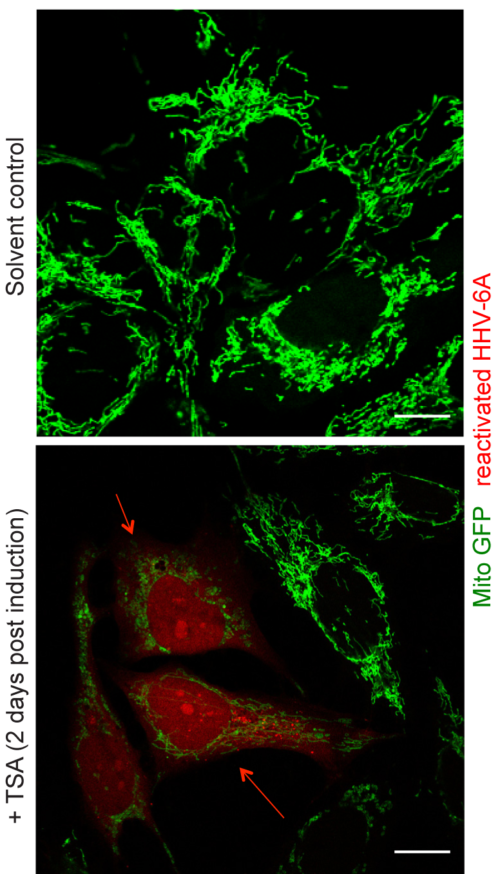German investigators have identified a marker for what they believe is the earliest stage of viral reactivation, or “transactivation” marked by transcription of several viral small non-coding RNAs in the absence of detectable viral replication. The group believes that these viral small RNAs could be developed as markers since unlike mRNA, the non-coding RNAs are relatively stable, making them detectable even in tissues fixed with formalin, and paraffin embedded for slides.
Led by Bhupesh Prusty, PhD, of the University of Würzburg, the investigators used a BAC-derived HHV-6A infected tumor cell line to identify a unique expression pattern of virus encoded small non-coding RNAs (sncRNAs) that they say can differentiate viral latency from early reactivation, and then gave preliminary evidence that they may be significant by demonstrating their abundance in several clinical samples from a patient with HHV-6 reactivation in DRESS. The sncRNAs they identified were evident in a skin sample in the DRESS patient before HHV-6A DNA was evident in the blood. The group also identified a novel small non-coding RNA from HHV-6A, which seems to be expressed only during reactivation.

Mitochondrial fragmentation was much greater in TSA treated HHV-6 infected cells (bottom) than in the solvent controls (top) shown at Day 2. Source: NPJ Genomic Medicine
Of interest, the group reported that an analysis of biological processes suggested major changes in mitochondria-associated pathways upon HHV-6A transactivation. HHV-6A induces mitochondrial fragmentation, they found.
The group also used a cell line harboring chromosomally integrated HHV-6 and applied multiple prescription drugs to the cells. Although they expected to find that the pan HDAC inhibitor drug Vorinostat activates ciHHV-6, they were surprised to find that others like allopurinol, imipramine, escitalopram (Lexapro), progesterone, and dapsone also reactivated HHV-6A. On the other hand, selective HDAC inhibitors like valproic acid or panobinostat did not activate HHV-6A.
The authors caution that prescription drugs should be carefully scrutinized for their ability to activate HHV-6. A previous study by the same group showed that a pregnant woman with ciHHV-6 developed complications in her pregnancy (and transmitted HHV-6A virus to the fetus) after being given a high dose of progesterone, a drug they found to activate integrated HHV-6 (Das 2016).
For more information, see the full paper: Prusty 2018b.
To see the prescription drugs that activated integrated HHV-6, click here.

